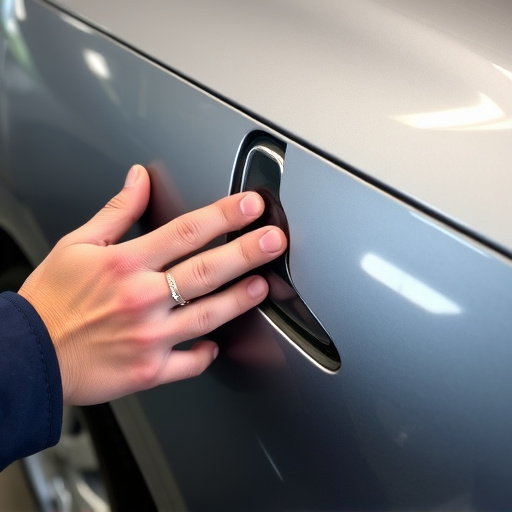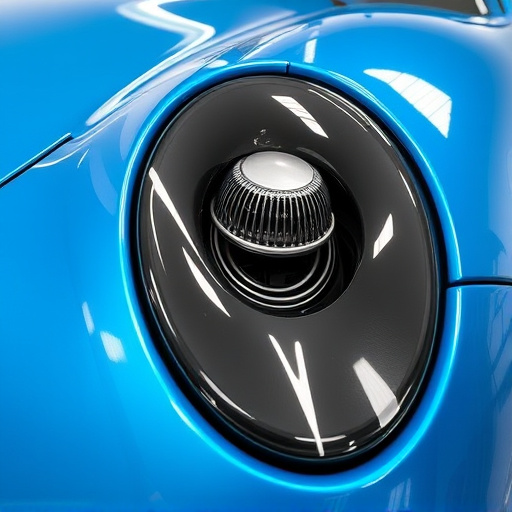The Tesla Heat Pump Inspection rigorously evaluates critical thermal management components in electric vehicles, including heat exchangers and compression valves, using advanced tools. This process identifies damage, verifies temperature regulation, and prevents severe car damage by maintaining optimal thermal balance in all weather conditions. Regular inspections reveal system performance, identify issues like leaks or blockages, enhance energy efficiency, extend heat pump lifespan, and reduce environmental impact.
“Uncover the intricacies of Tesla’s thermal management system with a deep dive into its heat pump inspection process. This comprehensive guide breaks down the step-by-step evaluation, highlighting critical aspects essential for optimal performance. From understanding the inspection methodology to interpreting results, we demystify the process. By mastering these key elements, homeowners and professionals can ensure efficient energy exchange, enhancing both comfort and sustainability. Explore the art of Tesla heat pump inspection and unlock the secrets to a well-managed thermal landscape.”
- Understanding Tesla Heat Pump Inspection Process
- Key Aspects to Evaluate During Thermal Management Test
- Interpreting Results: Ensuring Efficient Operation
Understanding Tesla Heat Pump Inspection Process

The Tesla Heat Pump Inspection process involves a meticulous evaluation of the vehicle’s thermal management system, ensuring its optimal performance and efficiency. This inspection goes beyond a typical check-up; it’s a comprehensive analysis designed to uncover any potential issues with the heat pump, a critical component in modern electric vehicles. Experts use advanced diagnostic tools to monitor the heat exchangers, compression valves, and other key parts, simulating various driving conditions to assess their functionality.
During this process, mechanics not only check for any signs of damage but also verify the system’s ability to regulate temperature effectively. This is especially crucial for Tesla vehicles known for their advanced cooling systems, which differ significantly from traditional internal combustion engines. A thorough inspection can prevent minor issues from escalating into more serious car damage repair scenarios, akin to a fender bender, and ensure the vehicle maintains its optimal thermal balance during extreme weather conditions, mirroring the performance of a Mercedes-Benz collision repair done right.
Key Aspects to Evaluate During Thermal Management Test

During a Tesla heat pump inspection, several key aspects must be evaluated to ensure optimal thermal management operation. Firstly, assess the condition and functionality of the heat exchangers, which play a crucial role in transferring heat between the indoor and outdoor environments. Inspect for any signs of corrosion, debris buildup, or damage that could impede their efficiency. Secondly, verify the proper operation of the compressor, as it’s the heart of the heat pump system, responsible for circulating refrigerant and enhancing heating and cooling performance. Check its speed, temperature output, and any unusual noises indicating potential issues.
Additionally, examine the insulation of pipes and ducts to ensure minimal heat loss or gain during transit. Look for any signs of damage or disintegration that could compromise the insulation’s effectiveness. The control system should also be tested for responsiveness and accuracy, ensuring the heat pump operates according to programmed settings. Lastly, review the overall energy efficiency by comparing current performance against manufacturer specifications, which is vital for long-term cost savings and environmental sustainability—aspects often overlooked in auto maintenance tasks like fender benders or car scratch repairs.
Interpreting Results: Ensuring Efficient Operation

Interpreting the results of a Tesla heat pump inspection is crucial to ensuring efficient thermal management operation within the vehicle. These inspections provide insights into the system’s performance, identifying any potential issues or inefficiencies that could impact energy consumption and overall climate control. By examining key metrics such as temperature differentials, pressure readings, and refrigerant levels, technicians can pinpoint areas for improvement. For instance, a discrepancy in temperatures between the indoor and outdoor units might suggest a leak or blockages within the system’s components—a common issue requiring prompt attention in both electric vehicles (EVs) and traditional car models during a vehicle body shop visit.
Regular maintenance checks, especially after a bumper repair or any vehicle repair, are essential to maintaining optimal performance. During these inspections, technicians can verify that all seals and connections remain secure, ensuring no energy is wasted due to leaks or poor insulation. This proactive approach not only extends the lifespan of the heat pump but also enhances the overall energy efficiency of the EV, contributing to reduced environmental impact. It’s a critical step in keeping your Tesla’s climate control system operating at peak performance, regardless of whether it’s a routine service check or following a collision repair.
A thorough Tesla heat pump inspection is key to validating the system’s thermal management operation, ensuring optimal energy efficiency and performance. By understanding the evaluation process, focusing on critical aspects during testing, and interpreting results diligently, homeowners can maintain a comfortable indoor environment while optimizing their energy costs. Regular inspections are a game-changer in maximizing the benefits of Tesla’s advanced heating technology.













